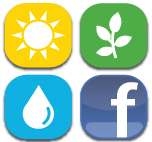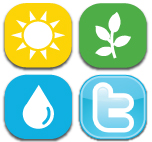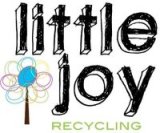
This photo depicts 2 million plastic beverage bottles, the number consumed in the U.S. every 5 minutes. Credit: Chris Jordan
The still-growing BP spill is a stark reminder of the many dangers and problems created by our society’s insatiable demand for oil. But as this disaster forces us to confront these problems and put serious thought into their solutions, it’s important to understand the connections that tie them together. Our addiction to oil is fueled by more than automobiles: it persists because of an attitude that we can consume and waste our resources as if they have no limits. Trash and recycling are connected to more than just landfills and green bins. The fact is, our current produce it-use it once-throw it away society wastes more than just paper or plastic – it wastes oil, and lots of it. If we can reform this unsustainable, wasteful system, we can help reduce the need for drilling anywhere.
Plastic products are a perfect example because they’re made primarily from oil. Imagine a typical plastic water bottle filled 1/3rd with oil: that’s how much oil was used to make it. Nearly 10% of U.S. oil consumption, which equates to approximately 2 million barrels a day, is used to make plastics. On the other hand, recycling plastic uses only roughly 10% of the energy that it takes to make it from virgin materials.
There are similar energy savings for other products. Each ton of recycled paper can save 380 gallons of oil, representing a 64% energy savings. Recycling aluminum saves 95% of the energy needed to make it from ore – while throwing away a single aluminum can wastes the amount of energy equivalent to filling it half-full with gasoline and dumping it on the ground.
Yet despite the clear benefits of recycling and reuse, many places in Texas have very low diversion rates. Recycling isn’t always as easy and accessible as is should be while many consumer products such as electronics and foam packaging simply aren’t designed to be recycled. This is due in part to the fact that the original manufacturers of such products currently bear little or no responsibility for recycling their own creations. Local governments—using your tax dollars—are left holding the proverbial plastic bag, and they can only afford to do so much in this time of serious budget shortfalls. Texas also has very weak environmental standards for landfills. Combine these factors with heavy tax subsidies for landfill space and we’re left with a system in which dumping our consumer goods is far more profitable than recycling – up to ten times more profitable, according to industry insiders. This is a huge reason why recycling programs aren’t available in every community, home and business.
Clearly, we can do better. Trash and landfills aren’t any more inevitable or necessary than oil spills. Waste is simply a design flaw, one that can and must be solved if we are to create a sustainable future. Recycling isn’t a silver bullet, but rather a tool that’s proven effective…and in need of sharpening.
The BP spill may very well be the worst environmental disaster this country has ever seen. Collectively, Gulf fisheries and coastal industries make up the 6th largest economy in the world. The planet’s most productive gulf fishing grounds may be destroyed not just this season, but for years to come. No matter how you feel about drilling, coal or nuclear, stopping waste means reducing the need for energy along with all the present and potential problems that come with it. Recycling and reducing waste at its source is more than a “feel-good” way to “go green;” in many ways, it’s also part of a long-term strategy to help prevent the next oil spill.
Let’s hope that if nothing else, this latest human disaster leads us to comprehend the underlying currents connecting a sea of problems and how our individual and collective actions control the tides.
Zac Trahan, Program Director, Texas Campaign for the Environment
Filed under: Recycling | Leave a comment »






















